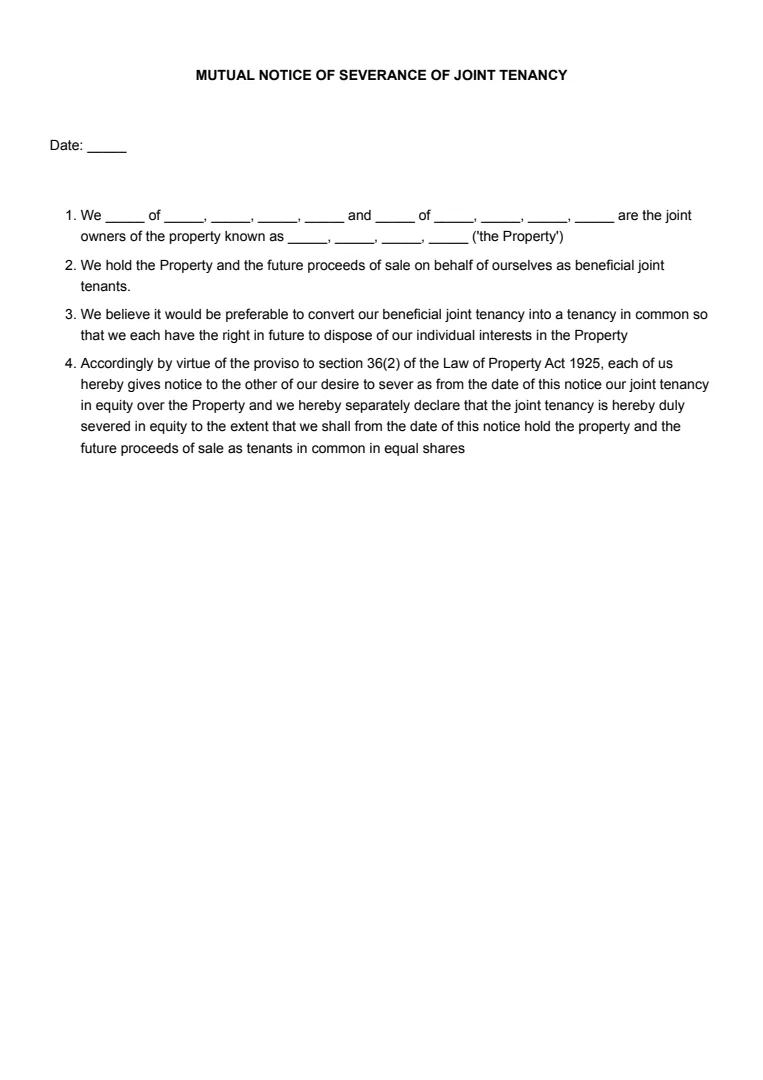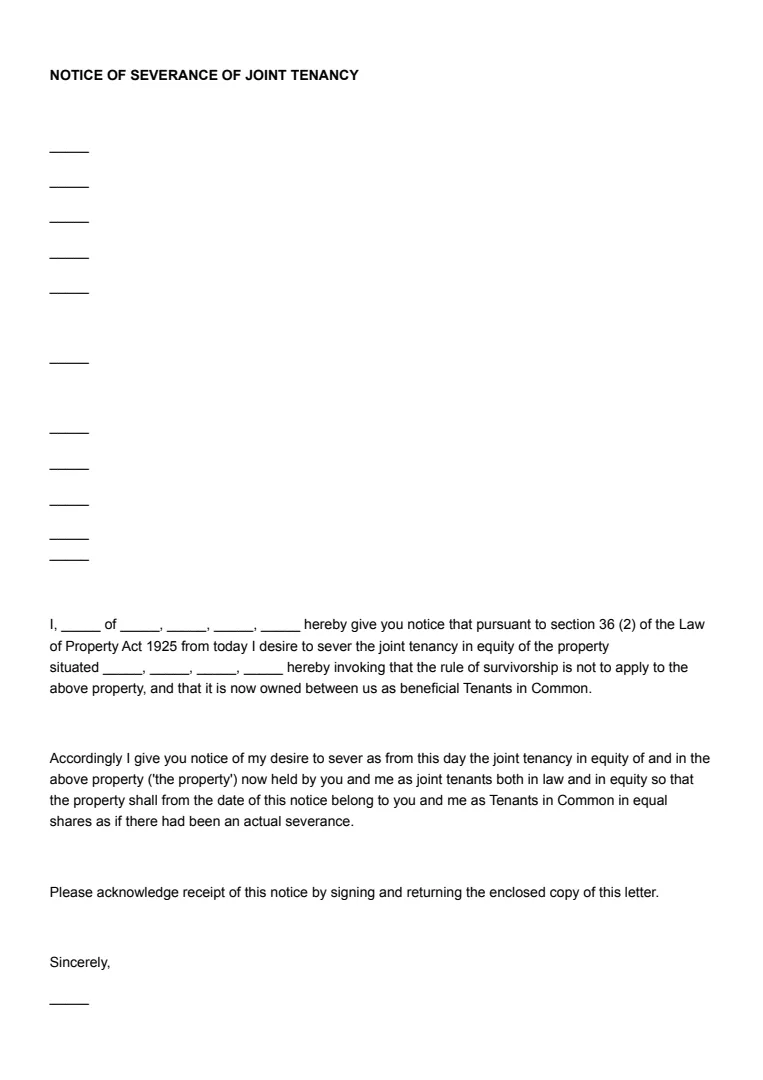What Is a Change of Address Letter?
A change of address letter is a written communication used to inform recipients that your postal address has changed. It can be sent by individuals to banks, employers, insurers, and government agencies, or by businesses to customers, suppliers, and regulators.
In the UK, while there is no single law that governs the use of change of address letters, certain bodies, such as HM Revenue & Customs (HMRC), the Driver and Vehicle Licensing Agency (DVLA), and Companies House, require prompt notification by law. Failure to update your details can result in missed communications, fines, or other penalties.
It’s also a key part of good recordkeeping, ensuring your contact information is consistent across all organisations that need to reach you.
When Should You Use a Change of Address Letter?
You should send a change of address letter whenever your address changes, as this is crucial for maintaining uninterrupted communication and meeting compliance requirements. This applies to both personal and business circumstances, and the timing of your notification can have significant consequences for legal compliance, financial security, and customer relationships.
Here are the main circumstances in which you should use a change of address letter.
1. Moving to a New Residence
If you are relocating to a new home, sending a change of address letter early can help avoid service interruptions and missed correspondence. For example, without notifying your bank, statements or replacement cards may still go to your old address, creating a potential security risk.
Similarly, electoral register updates, council tax adjustments, and GP records all rely on accurate address information. The sooner organisations are informed, the smoother your transition will be, and the less reliance you will have on mail redirection services, which are only temporary and may miss certain types of correspondence.
Expert Tip:
“Don’t rely solely on mail redirection services. They are a useful backup but not a replacement for notifying organisations directly; some important legal or financial correspondence may not be forwarded at all.”
2. Relocating a Business
When a company changes its registered or operational address, the implications extend far beyond postal delivery. Clients and suppliers may have contractual obligations tied to a physical location, and regulatory bodies such as Companies House require prompt notification to keep public records accurate.
Failing to notify business contacts in time could result in missed deliveries, delayed payments, and even breaches of compliance if licences or permits are tied to the old location. A formal change of address letter ensures that key stakeholders have verified information for future communications and transactions.
Expert Tip:
“When notifying clients and suppliers, update all business touchpoints at the same time (website, email signatures, invoices, and Google Business Profile) to avoid confusion and ensure brand consistency.”
3. Updating Personal Records Linked to Official Identification
Certain organisations, such as HM Revenue & Customs, banks, and insurers, require your current address to verify identity and prevent fraud. If your details do not match official records, you may face service delays, declined transactions, or problems with insurance claims.
For example, an incorrect address on a driving licence could result in a fine from the DVLA, and mismatched information on financial accounts can cause security flags that freeze your access until resolved. Sending a change of address letter to these institutions not only updates your records but also protects you against identity theft risks.
4. Name Change With an Address Change
If you’ve changed your name due to marriage, divorce, or deed poll at the same time as moving address, updating all records promptly becomes even more important.
A combined update avoids inconsistencies that might cause delays in official processes, such as passport renewal or property transactions. For instance, applying for a mortgage or insurance claim under a new name but with outdated address records could raise red flags that stall approval. In such cases, a well-drafted change of address letter can clarify both changes at once, making it easier for organisations to update their databases accurately.
How to Write a Change of Address Letter
Writing an effective letter to confirm an address change is about precision, professionalism, and ensuring that the recipient can update their records without delay. A well-written letter not only conveys the new address but also provides all the contextual information an organisation might need to process the change quickly and accurately.
Here’s a step-by-step guide to writing your own change of address letter.
Step 1: Begin With Your Contact Details
Place your full legal name, current residential or business address, phone number, and email address at the top of the letter. This allows the recipient to confirm your identity and link your request to existing records.
If you are writing on behalf of a business, include the company name, registration number, and your role. This is particularly important for regulated industries, where identity verification is a legal requirement.
Step 2: Add the Date of Writing
The date of the letter creates an official record of when the notification was sent, which can be critical in compliance scenarios. For example, the DVLA requires you to update your driving licence address promptly, and the date of your letter can serve as proof of timely action. This is also useful if there is a gap between when you send the letter and when it’s processed, as it establishes when you initiated the change.
Step 3: Include the Recipient’s Details
Always address the letter to the correct individual, department, or team within the organisation. Using vague salutations like “To whom it may concern” increases the risk of delays, as the letter may be routed incorrectly.
Where possible, verify the correct postal address, job title, or department in advance, especially for large companies or government agencies where internal mail routing can be complex.
Step 4: State Both the Old and New Addresses
Listing your previous address helps the organisation match your records accurately, particularly if they store historical data for verification. Include the full address exactly as it appeared on their system, and write your new address in full, ensuring spelling, house numbers, and postcodes are correct.
If you know the exact date your new address will take effect, specify it clearly to prevent correspondence from being sent to the wrong location during the transition period.
Expert Tip:
“Always double-check the postcode for both your old and new address. A single-digit error can cause mail to be misrouted and delay critical updates”
Step 5: Include Account or Reference Numbers
Organisations often manage multiple customers or cases under similar names, so a reference number is essential for pinpointing your record. This could be a customer account ID, insurance policy number, tax reference, or case file code. Including these numbers reduces the risk of misfiling and speeds up the processing of your update.
For government services, such as HMRC or your local council, these identifiers may be mandatory for changes to be accepted.
Step 6: Sign and Keep a Copy
A handwritten signature provides authenticity and can be important for legal or contractual updates. Even if you are sending the letter by email, adding a scanned signature can add a layer of formality and credibility.
Always keep a copy, either digital or physical, for your records. If any dispute arises about whether or when you notified the organisation, this copy serves as your evidence.
For higher-value or sensitive updates, send the letter via recorded delivery or a tracked courier service to create a verifiable trail.
Using a carefully structured change of address letter template (UK) ensures that none of these essential details are overlooked. Templates also help maintain a professional tone and consistent formatting, making it easier for recipients to process your request without delay.
Legally.io allows you to easily and quickly create a professional and compliant letter confirming address changes.
What Should a Change of Address Letter Contain?
The content of your change of address letter should be complete but concise, ensuring the recipient has all the information necessary to update their records without delay.
Here is what to include in your change of address letter:
- Your full name and up-to-date contact details – To confirm your identity.
- Date of the letter – To establish a clear record of notification.
- Recipient’s name and address – Ensures your letter is directed to the right person or department.
- Previous address – For record matching and verification.
- New address – Clearly printed and double-checked for accuracy.
- Effective date of the change – So the recipient knows when to start sending correspondence to the new address.
- Relevant account or reference numbers – To link the update to your specific account or record.
- Signature – Provides authenticity and formal approval for the change.
Legal Tips for Change of Address Letters
Here are a few legal tips to bear in mind when you want to create your own change of address letter.
- Provide notice as early as possible - The earlier you notify recipients, the less chance of missing important correspondence.
- Know your legal obligations - Some organisations, like the DVLA, have set deadlines for updating your address. Missing these deadlines can result in penalties.
- Use a reliable delivery method - Sending by recorded delivery or email with read receipt ensures you have proof of sending and receipt.
Expert Tip:
“For high-value or sensitive updates, such as notifying HMRC or your insurer, send the letter both by recorded delivery and as a scanned email attachment to create a dual record of notification.”
- Keep a copy for your records - If a dispute arises, you can prove that you gave timely and accurate notice.
- Ensure consistency across all accounts - Notify all relevant parties around the same time to prevent mismatched records that could cause delays or security risks.
Key Takeaways
A change of address letter is a critical tool for maintaining accurate records and avoiding missed communications when you move home or relocate a business.
It ensures legal, financial, and personal correspondence reaches you promptly and securely.
By sending the letter early, using accurate details, and keeping proof of delivery, you protect yourself from administrative errors and potential penalties.
A well-structured template can help you create a professional, legally compliant document with ease. Legally.io allows you to conveniently create your own change of address letter, quickly and easily, ensuring you’re not only compliant but also simplifying the process.













